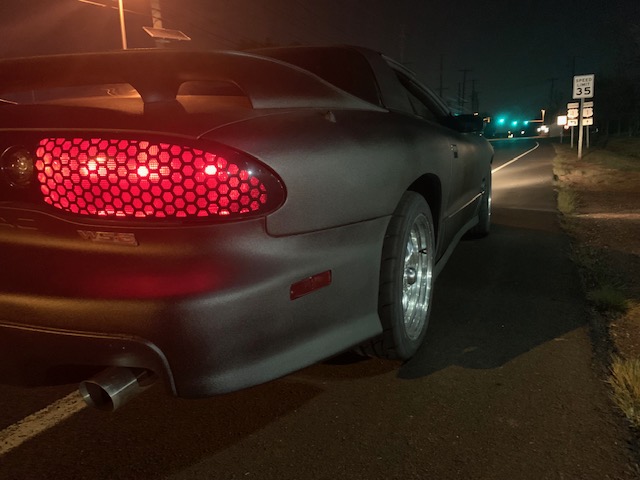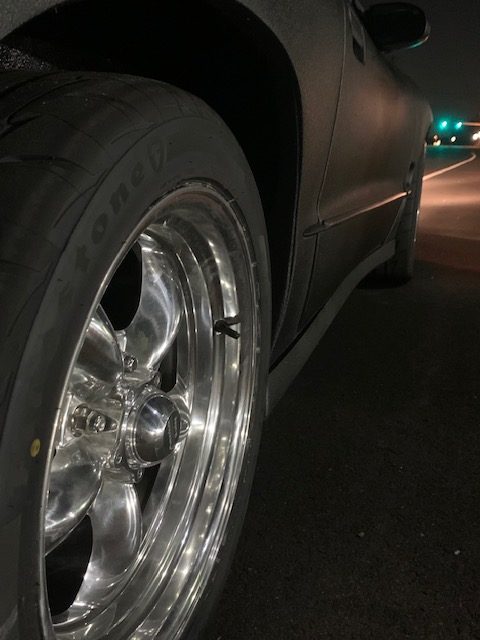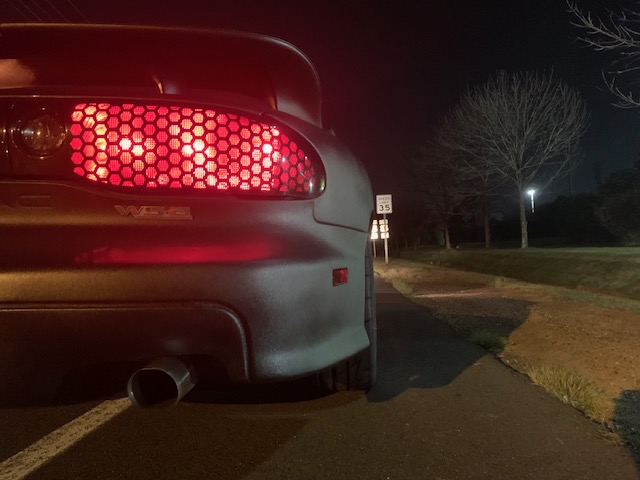Whether it’s for your new Maserati supercar or that exceptionally fun three-wheeler you have in the garage, walking into a tire shop to buy new tires can seem either too easy or too tricky for some people. One group of people will just buy the most affordable tire they need that fits their vehicle and allow themselves to believe that all tires are made equally. On the other end of that spectrum are those who get trapped by the paralysis by analysis of comparing a seemingly endless list of tire types and styles, not to mention trying to determine what season they most need to drive in.
So, when we decided to search for the perfect tire to add the finishing touch to our 2001 Pontiac Trans Am WS6 restoration, we contacted our friends at Bridgestone for some advice. Not only did we get the perfect set of tires, but we also learned a thing or two.
Which tires are the best for me?

Maybe ‘restoration’ isn’t the right word for our WS6 project. Perhaps ‘rehabilitation’ is a better choice. This car was driven daily for the better part of two decades and, as such, suffered all the common casualties that come with year-round Northeast roads. But, now in its retirement, it has been gratefully relegated to fair weather driving only.
With that component in play, we decided to ditch our old dry-rotted all-season tires in favor of a more focused style. Our Bridgestone rep helped guide us through the many available tire choices. We decided on summer tires, and while Bridgestone does sell its Potenza high-performance race-inspired rubber, we opted instead to go with Bridgestone’s subsidiary Firestone and their Firehawk Indy 500 tire for our project.
And the winner is…the Firestone Firehawk Indy 500

The Firehawk tires’ lower price tag did play a part in our decision, but we won’t lie to you; the idea of having Firehawk tires on a top-tier Firebird seemed just too synchronous to ignore. It also happened that the Firehawk tires also fit the bill, as their top three features are wet performance, wear life, and track performance.
This car’s racing days are over, but that doesn’t mean there won’t be an occasional test to ensure all 450 or so horses under the hood are galloping in sync whenever a desolate highway onramp happens to come around. With the right tires in place, cruising down the interstate comfortably at a slightly higher-than-recommended speed (conditions permitting) is not uncommon, so performance is still important.
With its W-speed rating, which means these tires can safely be used up to 168 mph, we were confident we would not be approaching anything close to that limit, but it is good to know we could if we really wanted to. So, upon reading that the new compound and wide shoulder blocks increased the Indy 500 tires’ stiffness and allowed it to corner exceptionally well, we felt we were on the right track (no pun intended).

Cars can be money pits, and we were on a mission to maximize our budget, so when we saw that the Firestone Indy 500 tire featured wear life as one of its primary tenets, we were all but sold. Having exceptionally responsive and agile tires is nice, but not if they only last a few thousand miles.
At the time of this writing, we were also in the midst of being bombarded by Tropical Storm Debbie, and we realized that even though we were getting a set of summer tires, it still rains (heavily at times) in warm weather. So, after reading about how the Pulse Groove channeling in the tread pattern of the Indy 500 tires reduces the risk of hydroplaning and how their improved rubber compound offers a 20% shorter stopping distance compared to its predecessor, we were all in.
Should I get new wheels when I get new tires?

The short answer is it depends. Allow us to explain.
After making the decision to purchase the Indy 500 tires, we waited patiently for them to show up at our doorstep. Firestone could have delivered them to a shop of our choosing, but instead, we had them sent to our house and then found a shop that could mount them immediately so we could get out and on the road as soon as possible.

Another problem with our original (and excessively beat-up) wheels was that at least one (possibly two) of them had a slight bend, causing air to leak out ever-so-slowly, and with it, our confidence in driving any significant distance. So, to complement our brand-new summer tires, we also decided it was time to upgrade our rims to a very muscle-car-like set of American Racing Torq Thrust II polished aluminum wheels. So, if your wheels are very old, bent, or damaged in any way, or if you have just really wanted a particular set of wheels for the better part of a decade and happen to have enough left in your rehab budget, then absolutely go for a new set to wrap your brand new tires around.
Real-world summer tires vs. all-season tires performance
Once we got these bad boys mounted, balanced, and a new alignment was done (as always is recommended with new tire installation), it was time to take them out for a test drive.
After several hundred miles of break-in, it was time to see what kind of performance these new Firehawk tires could provide. Skeptically, we didn’t expect much difference from the outgoing All-Seasons we had on, but to our surprise, the Indy 500s were noticeably different.
We first noticed the unbelievable amount of grip these tires had compared to our previous all-season setup. The firmer compound, even barely warmed up, made the WS6 feel like we were driving on a giant sheet of flypaper (minus the drag). Feeling glued to the road significantly improved not only the car’s actual grip on the road but also our confidence in being able to get on it without risking breaking the tires loose unintentionally.
The other big surprise was the decline in road noise. We expected a more performance-oriented tire with a denser compound would have caused more noise, vibration, and harshness, but the Firehawks actually allowed for a noticeably quieter ride.
How good are summer tires in the rain?

While having Tropical Storm Debbie descend upon us shortly after having our brand-new polished wheels and tires installed, it didn’t feel awesome at the time. Still, we then realized our seemingly lousy luck was actually fortuitous in terms of our tire review.
Summer tires often have a stigma (at least in our minds) of only being able to operate in supremely ideal conditions. But, when we found ourselves about an hour from home with hungry dogs to get home to feed, it was time to find out how capable our new tires were during inclement weather.
Full disclosure: There were no hard takeoffs nor any abnormal driving of any kind. This was a real-world test with our real-world money on the line, so we drove as we would typically during a downpour. Getting around town to the highway on-ramp was no problem, and the Firehawks seemed as good as any other tire on low-speed wet roads. We did push the pedal a little harder on the empty highway on-ramp in the name of automotive science, and we were pleasantly surprised to find that there wasn’t the faintest hint of slippage.
Then, cruising up at highway speeds was where the Firehawk tires really seemed to shine. Bridgestone/Firestone advertises the Indy 500 tire has an improved wet rubber compound and tread design over its predecessor. While we can’t speak to that specifically, as these are our first set of Firestone tires, compared to the previous all-season rubber we had, the Indy 500s felt just as confidence-inspiring (if not a little more so) in the wet weather. We arrived safely at home to hungry pups several minutes earlier than our GPS initially predicted, thanks in no small part to the ability to comfortably cruise without being concerned about hydroplaning or reduced stopping distances.
Above 45 degrees summer tires are an excellent choice for pure performance
Our first experience with pure summer tires has been a success. Compared to the all-seasons, these Indy 500 tires proved to be just as capable in wet weather and even more competent in dry weather. Tirerack.com customers also agree with us, giving the Firestone Firehawk Indy 500 tires a rating of ‘Excellent’ with an 8.5 in wet weather and a 9.3 in dry weather (out of ten) and an overall recommendation score of 8.7.
The lone caveat to these tires is that they are not recommended for use under 45 degrees (F). With just a small amount of searching, you can find reviews from people who have completely disregarded that advice and claim to have had success in extreme cold with these tires. However, we are not willing to take that chance. Instead, we will choose to listen to our engineering friends at Firestone and give this car a nice Snowbird vacation in the garage.
In conclusion, is the Firestone Firehawk the absolute best tire in the world? No, probably not. But it doesn’t claim to be. However, the Indy 500 is an extremely capable performance-based tire that has proven to be almost as good on wet roads as it is on dry ones. Factoring in the more than affordable price tag and suddenly searching for a new tire in the future just became much easier.







